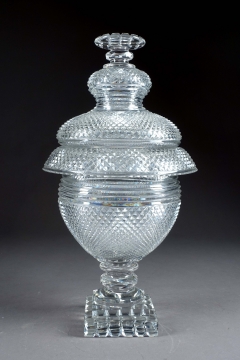Type:
Bonbonnière
Material / technique:
Diamond-cut and moulded crystal on a graded square, flaring and facetted foot
Dimensions:
H. 53 cm
Type of acquisition:
Acquired by the Germaine Delchambre and Robert Merveille Collection Fund
Year of acquisition:
2020
Depository institution:
Musée des Arts décoratifs – Hôtel de Groesbeeck-de Croix, Namur
